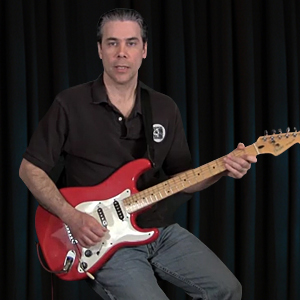Description
If you are in C major, you can construct a chord progression such as:
C (I) / A (VI) / Dmin (ii) / G (V) / C (I)
Normally the vi chord is a minor chord, so A minor. But we modulate, briefly change keys to D minor, by using an A major chord. This uses the note C# which is not in the key of C. But that's ikay because we are using it as a leading tone to get to the D minor chord; to prepare for its arrival. We do this in order to flesh out the chord progression, or make it more interesting. We call the major VI chord the "five of two" or (V of ii), because it's the V chord dominant of the ii chord.
We can do this for a number of chords! The next example I play is:
C (I) / Emin (iii) / Amin (vi) / Dmin (ii) / G (V)
I add secondary dominants by adding V of chords:
C (I) / B7 (V of iii) / Emin (iii) / A7 (V of ii) / Dmin (ii) / G (V) / C (I)
You can even add subdominant chords before the dominant chords to further flesh out any chord progression.
So you have deviated from pure C major, and are temporarily in the key of E minor or D minor but only long enough to prepare for its arrival, then you return to key of C major. This is the concept called Secondary Dominant. It is a Dominant chord inserted into a sequence of chords that creates a temporary Dominant-Tonic cadential resolution goal that is not in the home key. It is sometimes referred to as an Applied Dominant.
Notice the concept remains the same, though. The reason we use different chords is to provide variety & interest. And the reason we play certain chords in certain orders is to provide (or avoid) a sense of goal directed motion in the music. Typically, the secondary dominant is referred to in a chord progression as the "five of" whatever chord it is preparing. Because the vii dim chord can also be used as a dominant function you may also see "seven of" as a way of preparing for chord.
